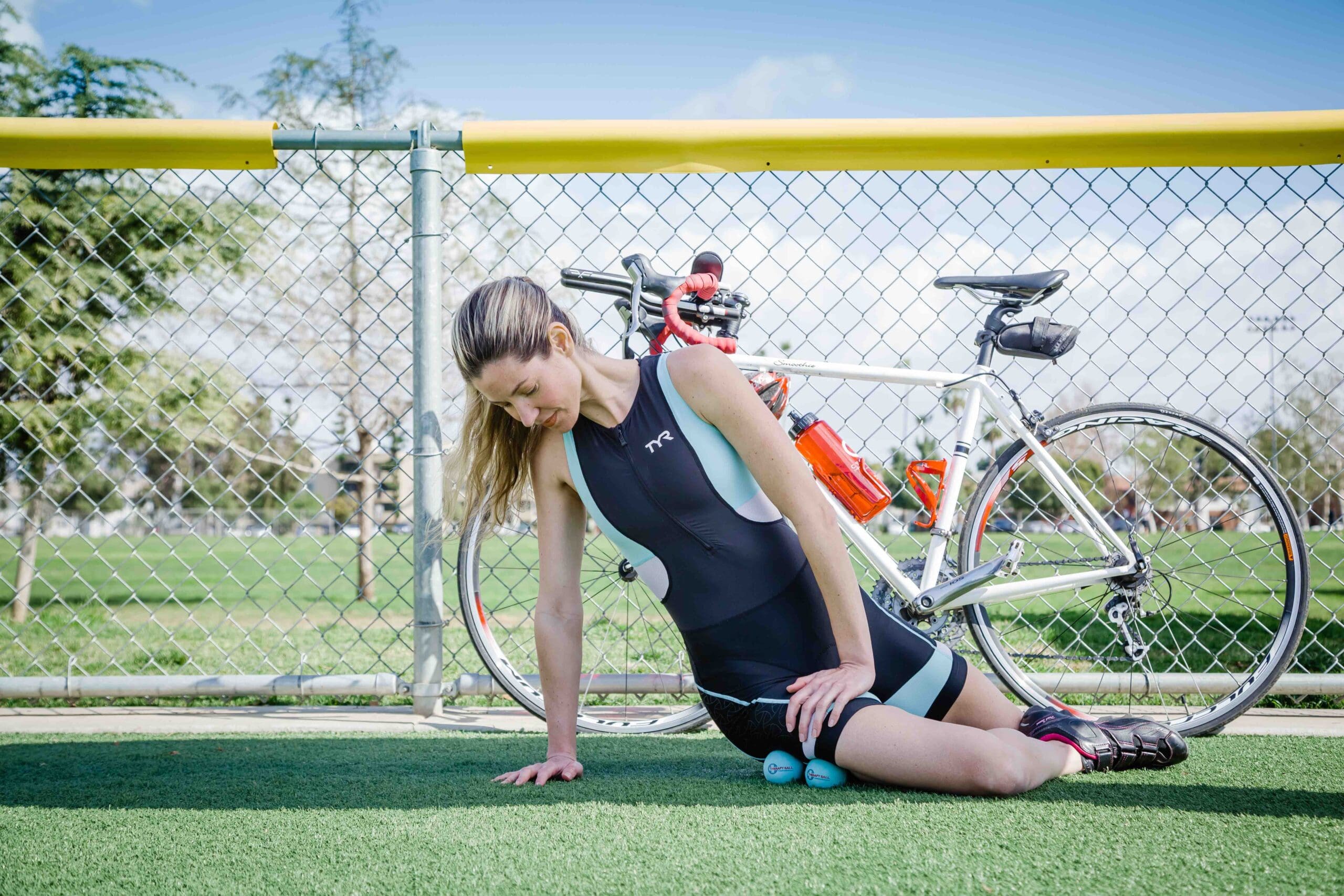
A groundbreaking study has shown that performing myofascial self-massage with Tune Up Fitness’ Roll Model® Method therapy balls prior to stretching can double flexibility gains achieved with stretching alone. And that’s not even the biggest news.
Rolling prior to stretching can increase maximum force output. This is BIG since the study confirmed what many other studies have shown–stretching alone can decrease your force output for up to 30min!
It means you can reach further and hold a position longer than ever before by including regular self-massage on therapy balls along with your stretching routine.
This study titled Self-massage prior to stretching improves flexibility in young and middle-aged adults is a game-changer (pun intended) for athletes and fitness enthusiasts who want a proven self-massage method that can take their performance to the next level. It is also vital for those who want to maintain functional fitness levels over time.
We have plenty of anecdotal evidence of these types of results in the Tune Up Fitness® community through our own CheckIn/ReCheck techniques. However, this information isn’t just anecdotal anymore.
We are grateful to Dr. Robyn Capobianco, a Tune Up Fitness® teacher and educator, for dedicating her time and energy (and dissertation work) to understanding the science behind self-massage on therapy balls.
Read on for details of the study, and to learn how to replicate these results for yourself.
What Was the Purpose of the Self-Massage Study?
What does that mean if you don’t speak anatomy?
This study was designed to examine how much you can stretch your calf muscles and how stretching temporarily affects your muscle strength.
How Was Self-Massage Studied?
The study looked at the difference between just stretching the calf muscles, and adding self-massage with therapy balls to that stretching. It then measured flexibility and strength of the target muscles after.
To study the effects of stretching alone, the 30 individuals performed the below leg/calf stretch for two sessions of 3×30 second stretches, with 30 seconds of rest between.
To study the effects of combining static stretching with self-myofascial massage on Roll Model® Method therapy balls, 60 seconds of the below self-massage was embedded within the stretch session.
How hard did they massage? About a 5 out of 10 level of discomfort.
What self-massage technique did they use? “Stripping” (moving with the grain of) the muscle fibers by rolling the original sized YTU therapy balls up and down (superior and inferior) along the calf muscles from the Achilles tendon to just below the knee.
After the stretch sessions, the following techniques were used to measure results:
“A digital goniometer connected to an amplifier (Biometrics Ltd, Newport, UK) was used to measure ankle dorsiflexion angle.” (p. 2)
“Subcutaneous tissue thickness was measured with a portable musculoskeletal ultrasonic imaging system (DP-30, Mindray North America, Mahwah, NJ, USA) with a 7.5 MHz linear trans- ducer (38 mm footprint).” (p. 2)
“Force was measured with a strain-gauge transducer (MLP- 300, Transducer Techniques, Temecula, CA). The force signal was digitized at 1,000 samples/s (Coulbourn Instruments, Allentown, PA)” (p. 3)
The Results: Self-Massage Prior to Stretching Enhanced Flexibility and Strength
Flexibility: Using the therapy balls, on average, DOUBLED ankle dorsiflexion from 12.5% with stretching only, to 24.5% when self-massage was added.
(There was a standard deviation of 16.9% within the group, but all increased ROM using the therapy balls.)
Why should you care? Because greater range of motion in your joints and soft tissues equals more access to complex movements. You can literally reach higher, twist further, and squat deeper.
You can also walk with more coordination and grace, a critical basic human movement at every stage of life. This supports increased athleticism while also helping fend off injury caused by stiffness and tension.
Force: Every participant had improved force production using the therapy balls (no one had force deficit). The average increase was 16%.
Why is this important for athletes? Because just static stretching before working out has been shown to decrease force output. The study shows, “Static stretching is effective at increasing range of motion, but it can diminish strength and performance measures, at least in young adults.” (p. 1)
But self-massage on the therapy balls prior to stretching does the opposite: it increases force output while also providing the added benefit of greater flexibility.
This means you can prime your body for greater range of motion AND greater force output at the same time.
Why else should you care? The basic act of walking constantly requires a single leg to dynamically balance through the ankle complex. Slip and falls are the single greatest cause of death in folks over 80. If these “rubber drugs” can be used for prehab, we may be able to collectively reduce accidents and injuries as we age.
Capobioanco shares, “Motor function and flexibility decline with advancing age, even in healthy adults.” She also states that rolling on therapy balls is better than PNF stretching. (p. 1)
An Answer for Future Flexibility and Strength
This study is a game-changer for anyone who teaches or practices self-care fitness.
Myofascial self-massage work can be part of the solution for flexibility and strength for yourself, your loved ones, and your clients.
“I have used the Roll Model Balls to roll away pre-competition stress, loosen up, and relieve pain. I have used them just prior to shooting a personal best.”
-Karen Kroll, gold medalist in the Masters division of the U.S. National Target Championships for Archery
To immediately put this information to use, try the following:
Self-Directed Myofascial Massage on Therapy Balls:
- Locate the muscle group you are focusing on before working out.
- Perform a simple stretch “CheckIn” to test ROM of that muscle group.
- Do a simple strength “CheckIn” to feel force production and steadiness.
- Do self-myofascial-massage on targeted tissue for 30s to 2m.
- ReCheck range of motion, force production and steadiness.
- Move into your workout and take note of differences from a typical day.
Let us know how it goes! Comment below about the muscle groups you targeted and if it made a difference in your performance.
Feel free to ask questions in the comments as well. It can take a little while to get the hang of myofascial self-massage, but it’s SO worth it. We’re here to help.
CITATION:
Robyn A. Capobianco, Melissa M. Mazzo & Roger M. Enoka (2019): Self-
massage prior to stretching improves flexibility in young and middle-aged adults, Journal of Sports
Sciences, DOI: 10.1080/02640414.2019.1576253
Author: Ariel Kiley with edits by Jill Miller and Dr. Robyn Capobianco
Related Article: 5 Steps to Make Self-Care Exercise a Habit
Learn more about our Therapy Ball Products and Programs
Interested in video and blog content targeted to your interests?

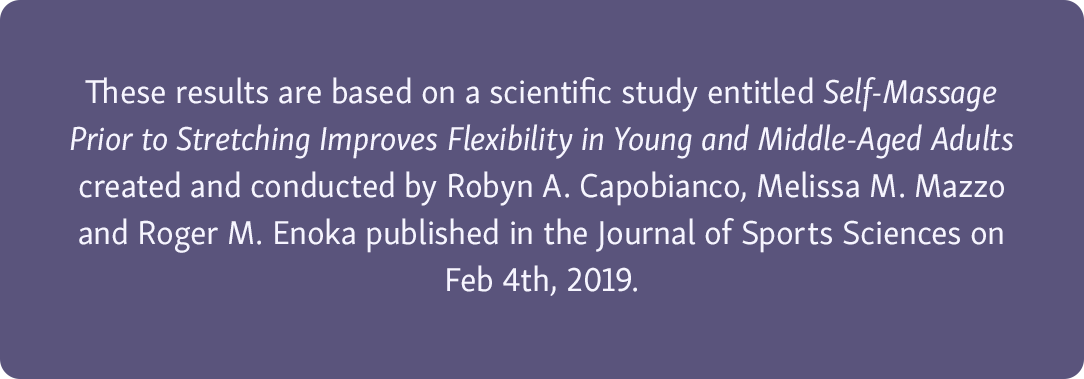

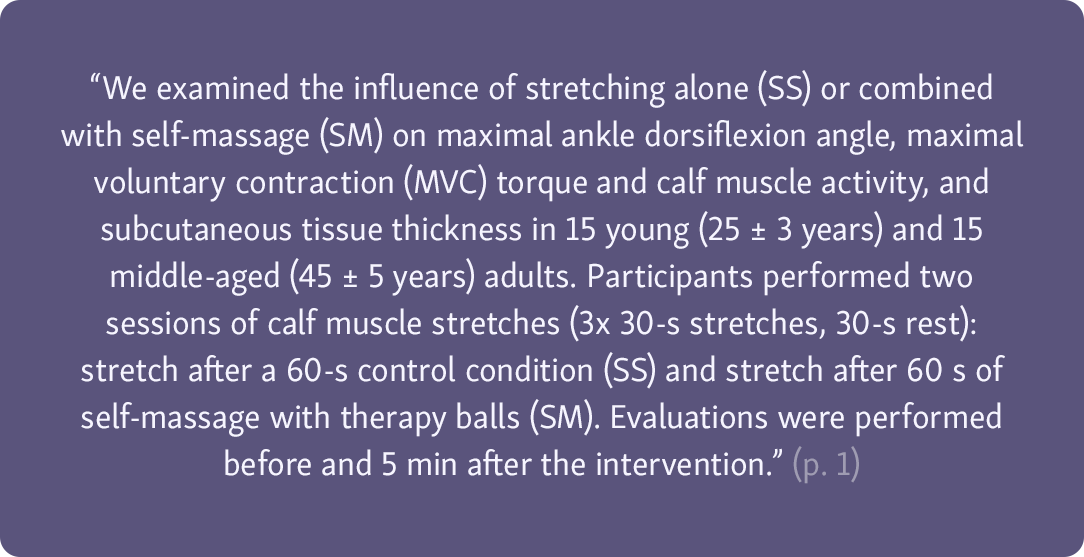
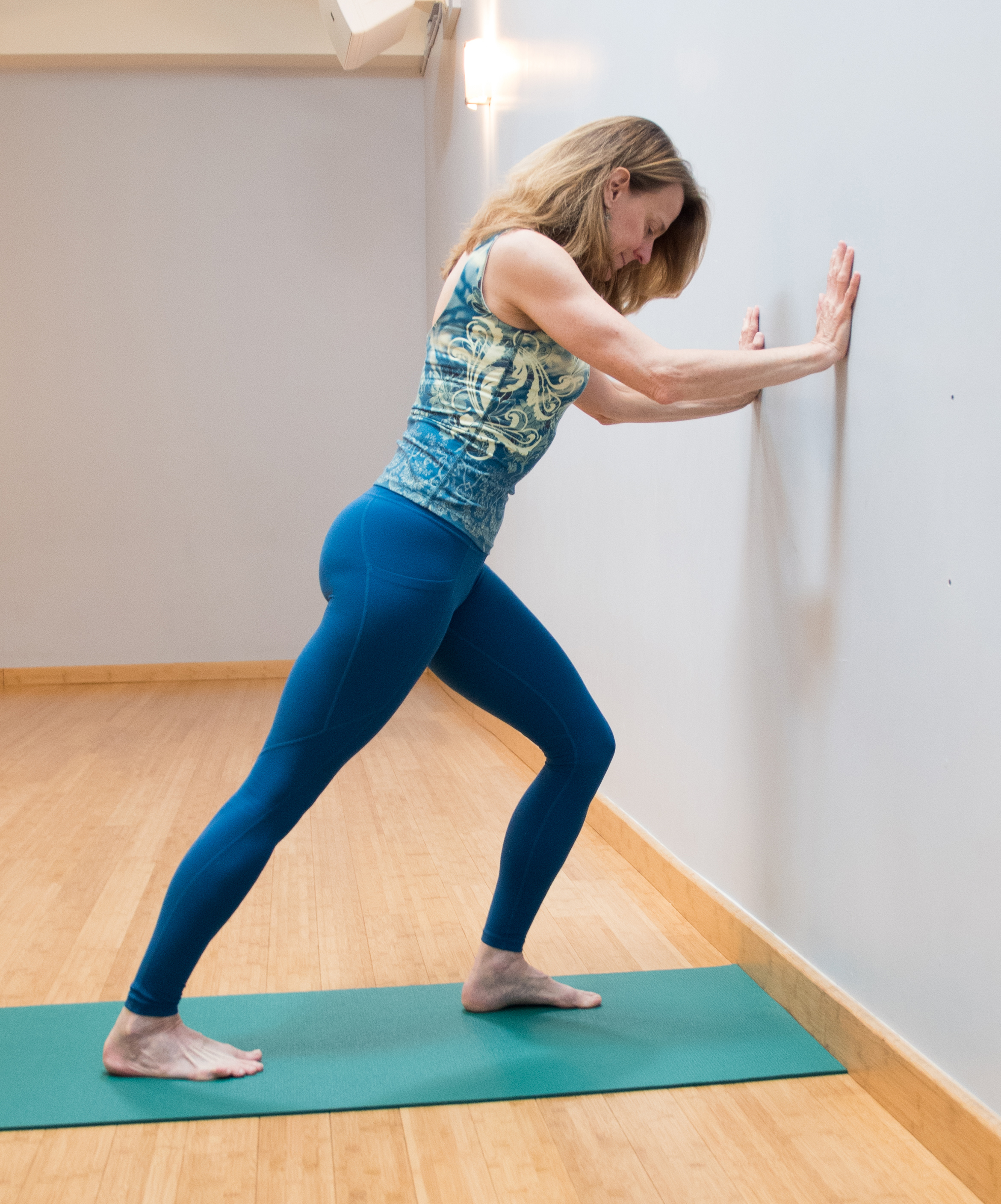

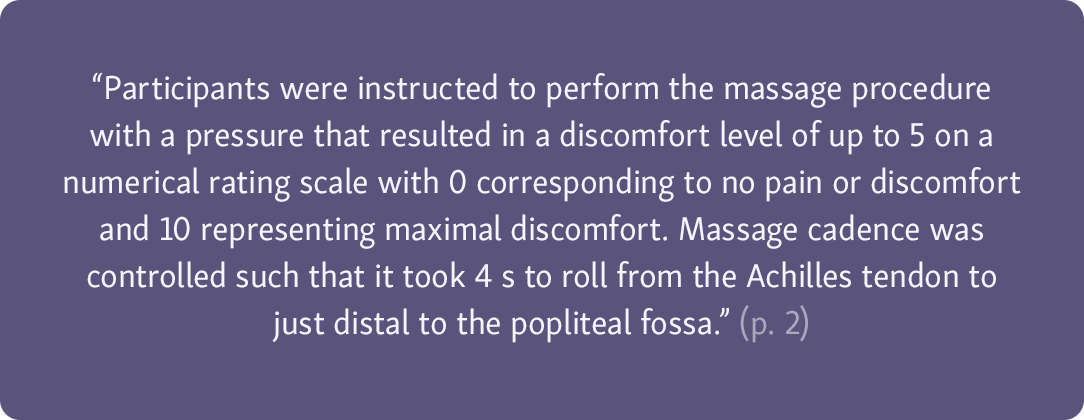

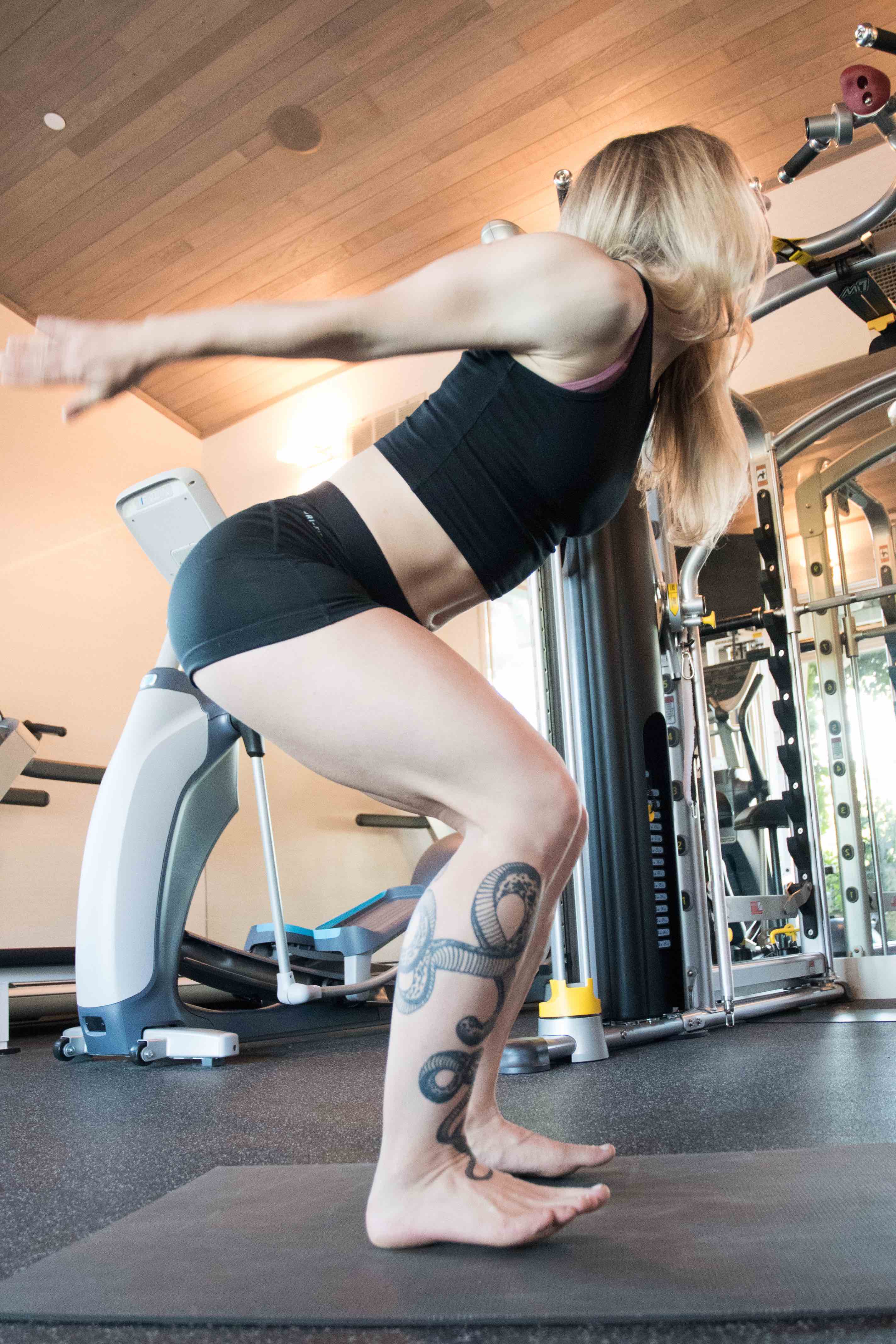

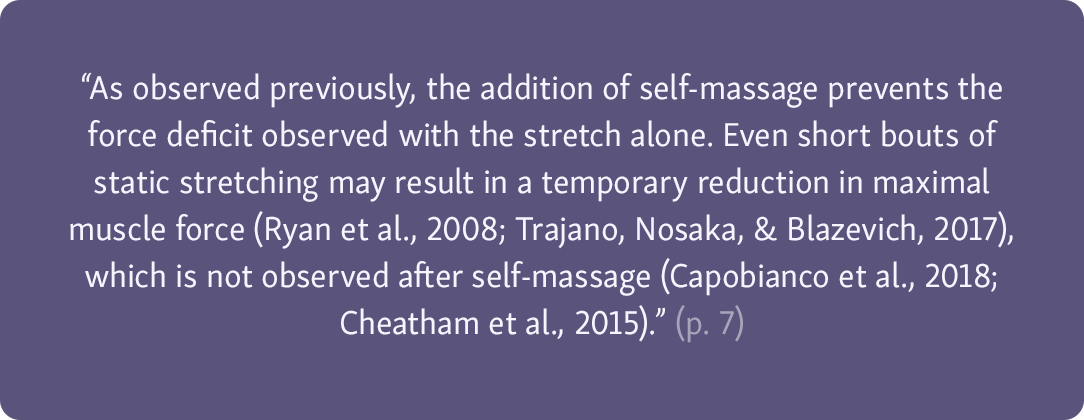
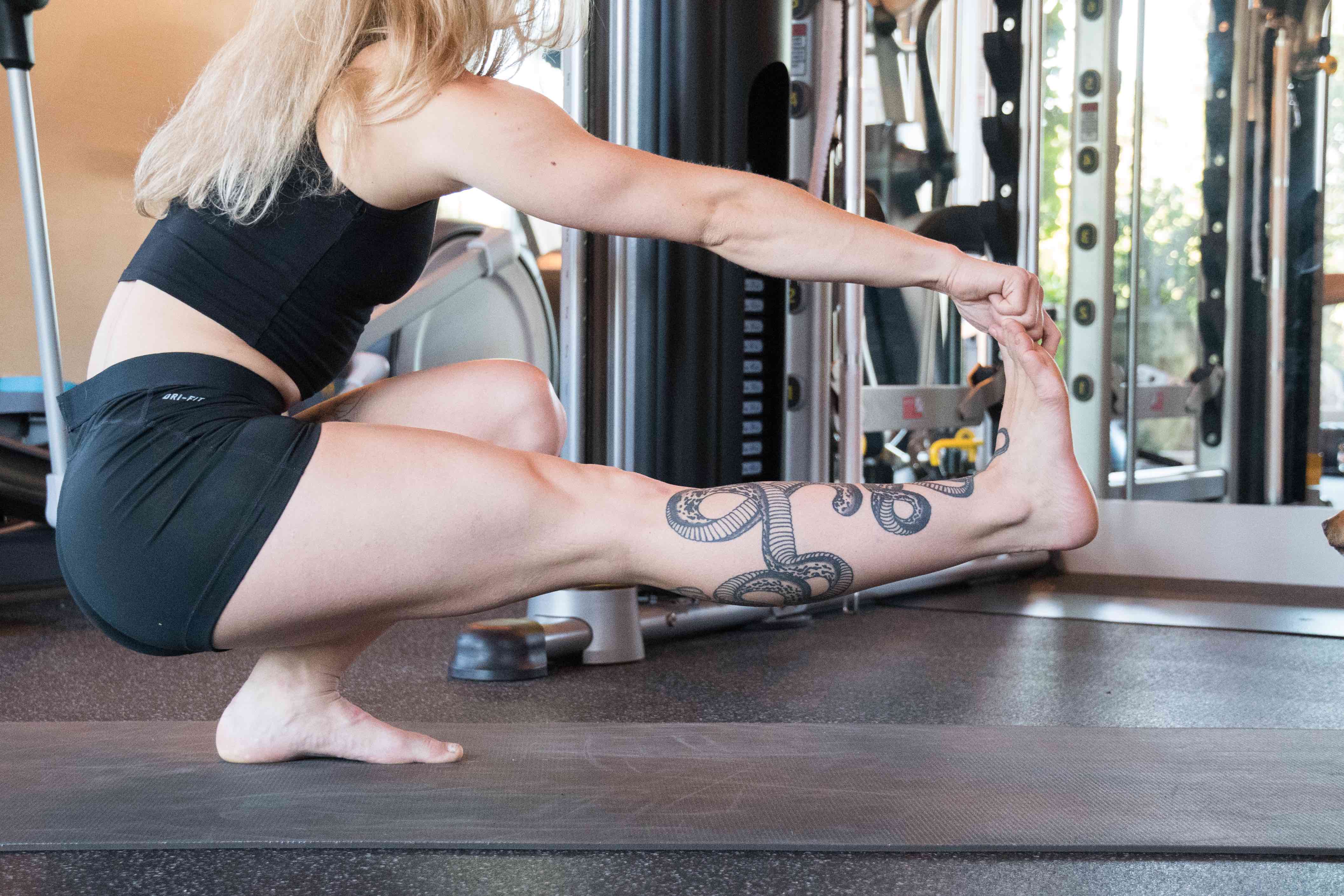



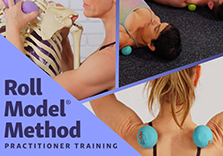






What a great study! I love how the results apply to everyone, from athletes looking to achieve personal bests to older adults wanting to maintain their balance as they age. And I love the term ‘prehab’. How different our health would be if we all took the time to care for ourselves before issues arise.
I’m happy to see evidence-based support for a technique that I subjectively know works for me. The evidence makes it easier to talk about.
Stretching seems to have become an outdated model that makes many dedicated yoga practitioners roll their eyes because it challenges their idea that “all you need for strength and flexibility is yoga asana”… I love how this article proves the opposite, backed by science. Force output is such an important factor in maintaining overall health that stretching along cannot provide—not only for athletes, but for all the regular people who aim to live better in their bodies! Will definitely share these facts with my students to get them ROLLING!
Très intéressant. J’aime l’appui scientifique que cela apporte à l’exercice de l’auto massage avant d’aller faire notre activité. Je vais inclure ces informations …que je trouve très importante….dans mes cours. Force et amplitude lors des mouvements après, c’est génial!
Très intéressant que cela soit appuyé sur une étude scientifique. Il y a des élèves qui aiment bien les données.
Love me some scientific research what a fun study to read and share! So often I get asked by clients “when is the best time to roll” I always say the famous “it depends” ? but what a great resource here to share! “Self-Massage Prior to Stretching Enhanced Flexibility and Strength” woooooo!!
Holy moly! Studies show that rolling is more effective than PNF, double the flexibility of stretching and improves torque? Wow! My only question: Why isn’t everyone rolling? And, why aren’t these studies more prevalent in the fitness world?
Such an important study done for coaches and trainers that are often nervous/hesitant to do stretching before workouts or competition, providing proof and a simple “how-to process”. Awesome article!
Super interesting data surrounding self massage! Magical what force output can do to gain flexibility…..
What are the mechanisms that explain why stretching would decrease force output while rolling on massage balls would increase force output?
Just a fun fact – I don’t fit into those categories above (I’m 63) but I used your tune-up Alpha ball daily for 8 month to roll out the butt. Yeah, to be exact — I rolled on the sciatic nerve to get rid of the mega cramp whenever it hit. Nothing else helped! It got me through the months I had to wait for lumbar surgery. I’m totally convinced that rolling prepares the muscles for the day and relieves the body of pain. I’ve got the whole set; Robyn Capobianco introduced them to me on Grokker. She totally rocks!
Super cool! It’s great to have research-backed evidence that what we already knew is true: YTU therapy balls are magic! The increase in force output is especially interesting, and now I want to know the specifics of WHY rolling has that effect. Faster and more effective neuromuscular connection? Better circulation? Improved hydration of the fascia?
Wow! The beneficits are really good for athletes. For a lot of them if they can get greater force this is already a good start but with an increase of range of motion this is even better. It’s nice to have some scientific evidence about the rolling.
I find it so interesting that the additional use of the balls can create an increase in force production. As an RMT I see a lot of athletes in my treatment room and always have a hard time persuading them to stretch after their workouts. They know they should but always say they don’t have time… but that’s a rant for another day. Now that I can refer back to this article and tell them that rolling and stretching before their workouts can actually benefit their performance they may be bit more excited to implement it.
It is so nice to have scientific evidence to back the roll model self-massage techniques. Is this research peer reviewed?
Very interesting to learn that self-massage on the therapy balls prior to stretching increases force. I will certainly remember that and test it soon.
Wow! Now I am thinking about the High School Track Team that I warm up! What if we added some rolling beforehand along with the stretching? This credibility could sway a school to want to invest in these YTU balls for warm ups and cool downs for all athletic teams!
This is amazing stuff and research based. Injury prevention! Improved performance!
I am a convert to the Roll Model Method after much skepticism! This work is effective on so many levels. I have been suffering with significant tightness in my biceps femoris for months which has led to knee stiffness. Stretching has actually been quite painful and has felt nearly impossible as my leg could not straighten. After rolling out the muscle for only a few minutes I have felt drastic improvement in range of motion and am able to access a deeper stretch. I recommend the Roll Model Method to all humans.
It is great to have the scientific data to back up the benefits of self massage (rolling with YTU therapy balls). I can’t wait to incorporate it into my current fitness classes to see if it helps my clients. Thanks for sharing!
What a great study! Self-massage AND stretching? I’ll take both please! My clients will love this as well!
This is such a great study for all athletes or those who work out speed and strength. I find that most people only use the rolling for recovery and not for warm up or mobility before activity simply because they dont know what that will do to/for their performance. Great to be able to point out this study and hopefully there will soon be some on just the rolling and soft tools.
I personally tested this out! Rolled both calves, 2 min each with the Therapy Plus Balls toted, right before a CrossFit comp event of box jumps and burpees. My partner and I won this particular event! ..but sadly not any of the other events that day. ?
This is great news! I always find more range of motion and better physical performance after rolling.
This is a super exciting study – FINALLY, some evidence of the benefits of rolling – now we need more studies looking at rolling on soft balls like the YTU balls!
Wow this study is so interesting, and I learned so much about how the rolling balls affects performance and longevity.
Love using balls for my own self massage and as part of my yoga practice. I will take this information and use it when I teach classes.
What I find so exciting is that it’s not even much time required on the balls to achieve these results!
“You can literally reach higher, twist further, and squat deeper”, yes please. It’s so helpful to have actual science to back up what self massage. The time spent studying flexibility with self massage is truly appreciated.
Debido a que quitamos de la fascia la mugre (en sentido figurado) al pasar las pelotas en el cuerpo, creo es muy viable el incremento de flexibilidad previo a los estiramientos. por eso es una buena practica si usamos Therapy ball sequence by Rolling Method Yoga Tune up antes de iniciar ejercicios de estiramiento y de fuerza. Yo lo hago y me funciona y si fue muy diferente que un una pelota de tenis que no hace lo mismo.
I was aware that self massage before a yoga practice helped with the flexibility but I didn´t know that it also helps to increase force output. This is a must to any person in the fitness world , this is very valuable information, thanks!!
Since the day I was introduce to the Roll Model Therapy Balls I’ve being introducing this practice to my Yoga practice or even before working out at the gym, Ive seen alot of improvement on my moves, flexibility and strength, also it helps me relax and be more prepare for the next day of excercise by avoiding being very sore. Of course, I will recommend including this practice to every persons excercise routine.
Wow!!!
Increases forced output!! It made sense that it increases flexibility but this research is changing the game of what people thinks about self-massage. This is a 100% yes to my next Roll Model Therapy Balls Certification!!
Fascinating! I have listened to a few podcasts recently that talked about how static stretching increases flexibility, but decreases our forced output. I find it extremely interesting that rolling with therapy balls will allow for gains in flexibility as well as gains in forced output. It makes me think differently about how to “pre-stretch” before a fitness regime that might require a bit more exertion and effort on strength.
I have been taking notice of gait issues for a while now. As I saw my mother getting up there in age with less and less mobility as the years went on to wheelchair bound. Is there more work being done in the senior community to incorporate SMR. My first thought would be the therapy ball would need to be softer to take into consideration of the thinning of skin in seniors and that the balls can cause bruising or internal bleeding .
I have experienced great relief in using the roll therapy balls . Not only does it release the myofascial tissues and breaks up muscle build up but it also releases neurotransmitters Wich cause deep relaxation
i was so surprised and amazed by how much more i can fold in fire log pose after Myofascial self-massage around my hip and gluteus, the Myofascial self-massage really helps increase flexibility and range of motion.
Hello
I would like to know if other studies have been submitted concerning the use of therapeutic bullets in diabetics or people at risk of falling.
I would like to consult them
thank you very much
After reading this blog, I had an interesting conversation with one of my students who is a competitive weight lifter. He never does static stretches before lifting anymore. He does dynamic moves to warm up the muscles and saves the stretching for after. We discussed the merits of the YTU therapy balls and have him rolling regularly in class. Will be interesting to see if I can get him to roll regularly before lifting. Will be forwarding this to him.
Having a study to back up what I have learned about using the YTU therapy balls and experienced in my own body is very inspiring. Therapy balls are making regular appearances in my classes and this article has given me more desire to keep experimenting and see where I can get to. Found it interesting about the increased dorsiflexion which is something I am working on.
So interesting! I recently came across a yoga tune up ball class at the university where I work. Flexibility has not been an issue for me but as I age I find that I am missing the strength component that will keep me stable and safe and able to continue in the things I love to do such as karate. This is so encouraging!
I am relatively (very …) new to Yoga Tune Up rolling. I am super excited to incorporate more into my life, in particular to support my karate practice.
This fragment of the article: “This study titled Self-massage prior to stretching improves flexibility in young and middle-aged adults is a game-changer (pun intended) for athletes and fitness enthusiasts who want a proven self-massage method that can take their performance to the next level. It is also vital for those who want to maintain functional fitness levels over time” speaks to me loudly especially because of the family experience I have. My son was a varsity soccer player and college soccer player and as a result of not having well provided stretching or self-massaging he is experiencing now difficulties especially in his knee. This article helped me understand the importance of a proper stretch.
Great to see the scientific evidence to support the claims particularly for those individuals seeking ever greater yield and performance indicators- Thank you
i find this article blog very interesting and helpfull, so thank you for sharring. i just did an anatomy course with Taylor Dunham where she intoduced the use off balls in yoga, it was a very interesting aprouch and it make sence to use as a helper to deepend flexibilety and loosen up where there is thightness. i am slowly intoducing this yoga theraphy balls into my yoga class. and by reading this blogg and study on the balls gives me even more confidence to keep teaching and practicing this happy tool to flexibilety as it invites us into youth,
This makes me even more passionate about using the YTU balls! They are such an amazing tool to have to help our bodies move and feel better.
I would have liked the study to include more than 30 people to make it more reliable. Although I feel that the information is relevant and most likely true if the study was expanded to more people, it would be better to have more people to support the findings.
What are we experiencing with boll rolling
great experience! pain free easy to move .
Showing us data of scientific research
makers me how apply it with confidence in a class
I had heard a podcast that referenced this study and I believe it was YogaLand. AS soon as I heard it I shared it with my yoga students, as we had been incorporating some other forms of myofascial release with foam rollers. The pre check in and post check in went just like you stated here! Having the actual data to back up what we “felt” to be true is incredibly validating!